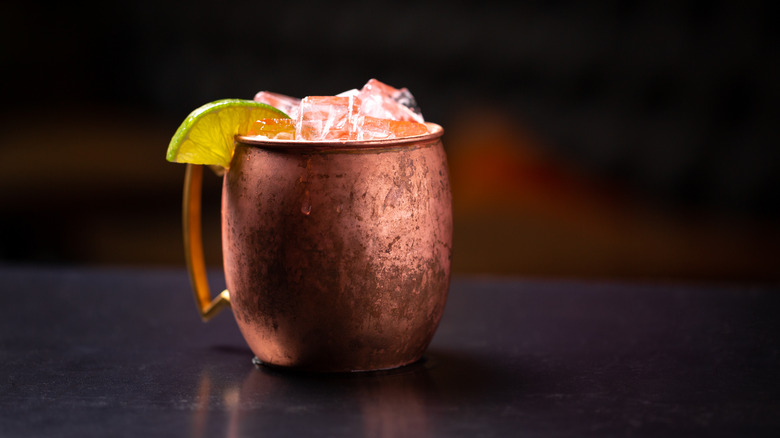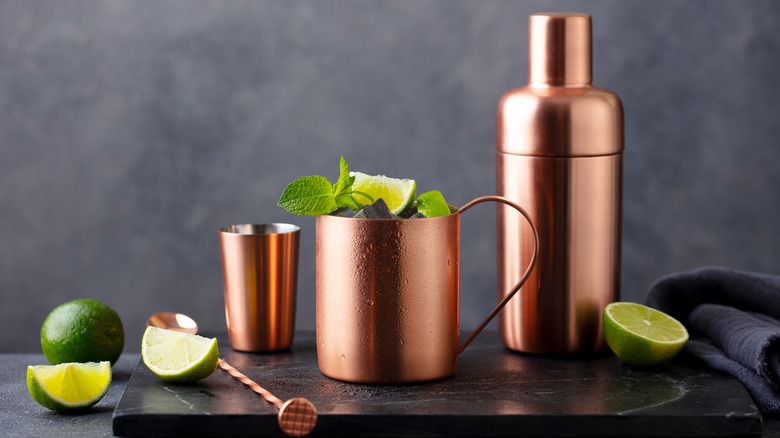How The Moscow Mule May Have Gotten Its Special Mug
The way the Moscow Mule acquired its signature copper mug is a fascinating story and also a pretty controversial one. In fact, it's the only aspect of the drink's origin to feature conflicting accounts. The story begins with the introduction of Smirnoff vodka to America. The rights had originally been sold in 1925 by Vladimir Smirnov, notes Atlas Obscura, but the man who acquired them, Rudolph P. Kunett, immediately ran into difficulties in attempting to sell vodka in America. The first problem was Prohibition, which would continue for eight more years. The second was the lack of interest on the part of the American public.
Kunett's money ran out in 1938, per Atlas Obscura, so he sold the rights to G.F. Hublein & Bros and promptly went to work for the company. But it was Heublein's president at the time, John Martin, who would make Smirnoff vodka famous. According to Thrillist, the fortuitous moment occurred in 1941, when Martin was visiting a bar in Los Angeles called the Cock'n Bull. Martin was friendly with the bar's owner, Jack Morgan, who had a cellar full of ginger beer and no idea how to sell it. Per World's Best Bars, it was the Cock'n Bull's bartender, Wes Price, who came up with the solution: a cocktail featuring Smirnoff vodka, ginger beer, and lime. They called their creation the Moscow Mule, and it soon became wildly popular thanks to Martin's savvy marketing.
Now, about those copper mugs ...
Three different versions of the copper mug story
In the version Thrillist relates, it was the girlfriend of Cock'n Bull owner Jack Morgan who was responsible for the copper mugs. Her name was Ozeline Schmidt, and as luck would have it, a family member had willed her a copper mine and an inventory of copper-based products. Yes, including the copper mugs that would help make the Moscow Mule famous.
Another version, courtesy of World's Best Bars, features a woman who was a copper factory heiress. Her name was Sophie Berezinski, and like Ozeline Schmidt, she too had acquired a cache of copper mugs, which she had brought with her to Los Angeles when she emigrated from Russia. If that sounds too good to be true, consider how lucky she also allegedly visited the bar when the cocktail was in its formative stages.
Both versions seem unlikely, but at least the latter is backed up by a modern-day company — the Moscow Copper Co. — which claims the Berezinski version as its origin story. The most likely version, however, for how the chill-sustaining copper mug became the go-to container for the Moscow Mule was put forth by cocktail historian George Sinclair. As War on the Rocks relates, Sinclair believed that the Cock'n Bull, like any self-respecting English-style pub of that era, would already have had a supply of copper mugs on hand in which to serve beer.

